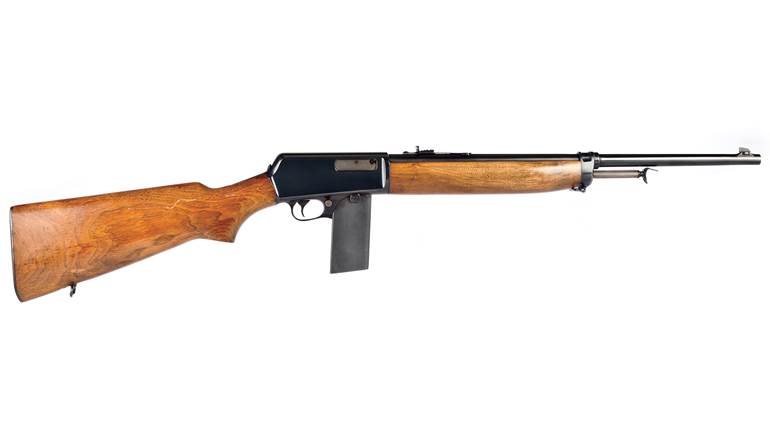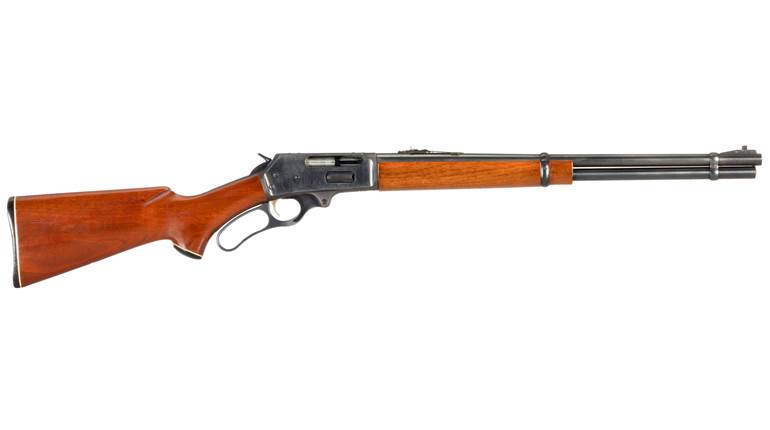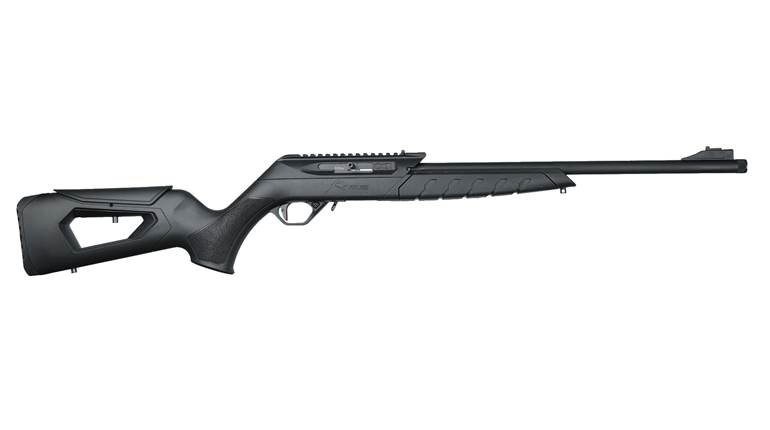
 One of the most popular subcategories of collecting pre-’64 Winchester lever-actions is the “trapper,” or “baby carbine” as it was originally called, a model with a barrel shorter than the standard length of 20". Trappers encompass Model 1873s, 1892s and 1894s, with verified extra-cost barrel lengths of 19", 18", 17", 16", 15", 14" and even 12", with 14" and 15" barrels being most often encountered. Nonetheless, “most often” is relative, as trappers (a term never used by Winchester, which referred to them as Special Short Carbines) are exceedingly rare, were never cataloged and were ultimately discontinued in 1933.
One of the most popular subcategories of collecting pre-’64 Winchester lever-actions is the “trapper,” or “baby carbine” as it was originally called, a model with a barrel shorter than the standard length of 20". Trappers encompass Model 1873s, 1892s and 1894s, with verified extra-cost barrel lengths of 19", 18", 17", 16", 15", 14" and even 12", with 14" and 15" barrels being most often encountered. Nonetheless, “most often” is relative, as trappers (a term never used by Winchester, which referred to them as Special Short Carbines) are exceedingly rare, were never cataloged and were ultimately discontinued in 1933.
 Guns with barrels 16" and longer had standard barrel stampings; shorter barrels were stamped behind the front sight band. Most trappers had saddle rings, but the most authenticating feature is their fore-end wood, which measures 7¼"—1" shorter than a standard carbine fore-end. In addition, the front sight bases are forged to the barrel, not dovetailed or soldered (beware of fakes).
Guns with barrels 16" and longer had standard barrel stampings; shorter barrels were stamped behind the front sight band. Most trappers had saddle rings, but the most authenticating feature is their fore-end wood, which measures 7¼"—1" shorter than a standard carbine fore-end. In addition, the front sight bases are forged to the barrel, not dovetailed or soldered (beware of fakes).
Baby carbines were shipped to Australia, South America and the American southwest, with many used by law enforcement agencies, including the Arizona Department of Public Safety. Other baby carbines were shipped to the northern United States and Canada, which inspired their “trapper” sobriquet. Trappers were usually chambered in .44-40 Win. in Model 73s and 92s but .30-30 Win. in the Model 94s. Their reduced magazine capacities were offset by better ballistics and close-range accuracy than a handgun. Trappers’ aura of adventure, coupled with their rarity, creates a premium; potential purchases should be appraised by reliable sources such as the Blue Book of Gun Values (bluebookofgunvalues.com).
 Original trappers with barrels less than 16" must be declared a Curio & Relic by the Firearms Technology Branch of the Bureau of Alcohol, Tobacco, Firearms and Explosives (ATF). However, ATF authentication is not required for the Model 94 trapper shown here, which has a 16" “Special Carbine Barrel” described by the late George Madis in his classic, The Winchester Book. Unfortunately, the magazine tube has been replaced, the wood has been lightly sanded and the front sight is bent. Additionally, the receiver and rear barrel band have been polished, probably to remove flaked bluing on the nickel steel, although traces of original bluing remain and the bore is sharp. Were it not for the magazine tube and receiver issues, it could have fetched $6,000 to $8,000. Even so, this trapper would easily bring $2,850 to $3,500 at a gun show.
Original trappers with barrels less than 16" must be declared a Curio & Relic by the Firearms Technology Branch of the Bureau of Alcohol, Tobacco, Firearms and Explosives (ATF). However, ATF authentication is not required for the Model 94 trapper shown here, which has a 16" “Special Carbine Barrel” described by the late George Madis in his classic, The Winchester Book. Unfortunately, the magazine tube has been replaced, the wood has been lightly sanded and the front sight is bent. Additionally, the receiver and rear barrel band have been polished, probably to remove flaked bluing on the nickel steel, although traces of original bluing remain and the bore is sharp. Were it not for the magazine tube and receiver issues, it could have fetched $6,000 to $8,000. Even so, this trapper would easily bring $2,850 to $3,500 at a gun show.
Gun: Winchester Model 94 “Trapper” Baby Carbine
Caliber: .30-30 Win. (.30 WCF)
Condition: 60 percent—NRA Good (Modern Gun Standards)
Serial No.: 1053XXX—According to Steve Fjestad, author of Blue Book of Gun Values, “This gun is in the middle of the serial number range when the model name transitioned from Model 1894 to Model 94.”
Manufactured: Aug. 27, 1929 (shipped)
Note: This is the only information available, as many trappers are not listed by barrel length, so always get professional authentication when purchasing such rarities.
Value: $2,850-$3,500 (reflects replaced magazine tube, lightly sanded wood, and polished receiver and rear barrel band. as a matter of interest, this gun previously sold for $6,500.)




































